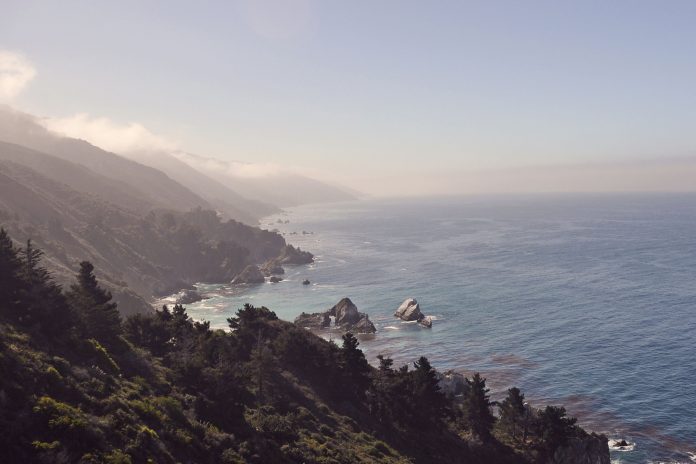In this article, we will discuss the process of creating an Age and Gender Predictor using OpenCV.
Let’s divide the task into 2 parts:
- Age prediction – The prediction will be in the form of categories where categories are a few age intervals like 0-6,18-25, etc.
- Gender prediction – The prediction is a classifier based where categories are Male and Female.
The approach followed for each task is as follows
The main problems in this project are the quality of the camera, brightness in the room, the background of the person, the boy cut in the case of girls/the long hair of boys.
The solution to this problem is quite simple, instead of predicting an exact image, we will work on the face of the person only. The flowchart below shows the flow of code.

Now that we have clarity of our problem, let’s go ahead and start with the code.
Import Libraries
- Opencv: To Read and process the image which includes resizing, making a face blob, forming a bounding box, etc.
- Matplotlib: To plot the image.
Python3
import cv2 import matplotlib.pyplot as plt |
Importing Image
To import the image we will be using OpenCV.
Python3
# Input image image = cv2.imread('image.jpg') image = cv2.resize(image, (720, 640)) |
Importing Models
To download the below pre-trained models follow this link.
Python3
# Importing Models and set mean values face1 = "opencv_face_detector.pbtxt"face2 = "opencv_face_detector_uint8.pb"age1 = "age_deploy.prototxt"age2 = "age_net.caffemodel"gen1 = "gender_deploy.prototxt"gen2 = "gender_net.caffemodel" MODEL_MEAN_VALUES = (78.4263377603, 87.7689143744, 114.895847746) # Using models # Face face = cv2.dnn.readNet(face2, face1) # age age = cv2.dnn.readNet(age2, age1) # gender gen = cv2.dnn.readNet(gen2, gen1) |
Defining the categories of age and gender in the list.
Python3
# Categories of distribution la = ['(0-2)', '(4-6)', '(8-12)', '(15-20)', '(25-32)', '(38-43)', '(48-53)', '(60-100)'] lg = ['Male', 'Female'] |
Copying the image so that we can further use it for demonstrating the final output.
Python3
# Copy image fr_cv = image.copy() |
Now as we are all set. Let’s start identifying the face blob from the image.
Python3
# Face detection fr_h = fr_cv.shape[0] fr_w = fr_cv.shape[1] blob = cv2.dnn.blobFromImage(fr_cv, 1.0, (300, 300), [104, 117, 123], True, False) face.setInput(blob) detections = face.forward() |
Create the bounding box so that further use it in the output image. (For better understanding)
Python3
# Face bounding box creation faceBoxes = [] for i in range(detections.shape[2]): #Bounding box creation if confidence > 0.7 confidence = detections[0, 0, i, 2] if confidence > 0.7: x1 = int(detections[0, 0, i, 3]*fr_w) y1 = int(detections[0, 0, i, 4]*fr_h) x2 = int(detections[0, 0, i, 5]*fr_w) y2 = int(detections[0, 0, i, 6]*fr_h) faceBoxes.append([x1, y1, x2, y2]) cv2.rectangle(fr_cv, (x1, y1), (x2, y2), (0, 255, 0), int(round(fr_h/150)), 8) faceBoxes |
Output :
[[482, 40, 604, 262]]
Finally, implementing the gender and age detection on the face extracted.
Python3
# Checking if face detected or not if not faceBoxes: print("No face detected") # Final results (otherwise) # Loop for all the faces detected for faceBox in faceBoxes: #Extracting face as per the faceBox face = fr_cv[max(0, faceBox[1]-15): min(faceBox[3]+15, fr_cv.shape[0]-1), max(0, faceBox[0]-15):min(faceBox[2]+15, fr_cv.shape[1]-1)] #Extracting the main blob part blob = cv2.dnn.blobFromImage( face, 1.0, (227, 227), MODEL_MEAN_VALUES, swapRB=False) #Prediction of gender gen.setInput(blob) genderPreds = gen.forward() gender = lg[genderPreds[0].argmax()] #Prediction of age age.setInput(blob) agePreds = age.forward() age = la[agePreds[0].argmax()] #Putting text of age and gender #At the top of box cv2.putText(fr_cv, f'{gender}, {age}', (faceBox[0]-150, faceBox[1]+10), cv2.FONT_HERSHEY_SIMPLEX, 1.3, (217, 0, 0), 4, cv2.LINE_AA) plt.figure(figsize=(7, 7)) plt.imshow(fr_cv) |
Output :

Output Image


More improvement:
We can use another pre-trained model like YOLOv5.




